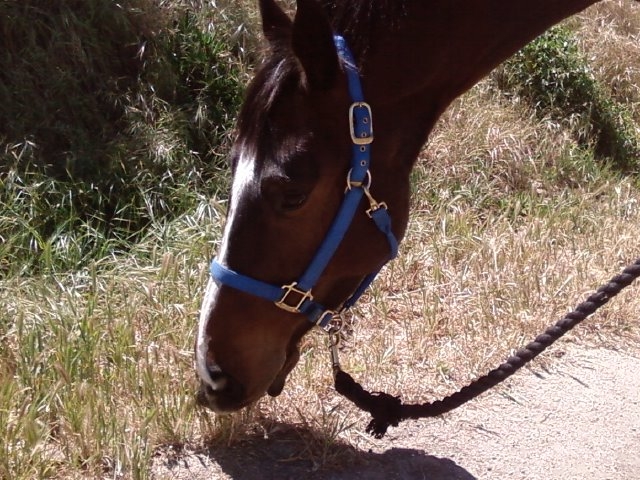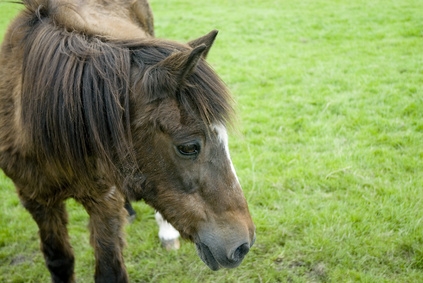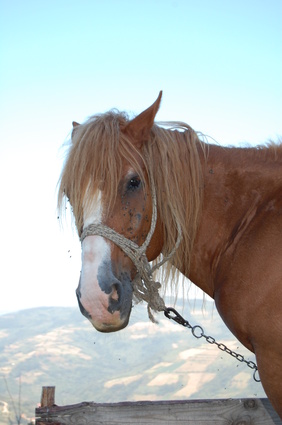Many foals are lost to septicemias every year. This is due to the fact that the foal is very susceptible to many types of infections and many types of infections can cause septicemia. The most common method for a foal to become infected is through the umbilical cord stump.
The umbilical cord should not be broken too soon after the birth of the foal. If the umbilical cord is broken too early, the foal may be deprived of a large quantity of blood. The cord should be allowed to break on its own and the disinfected quickly thereafter. Most foaling attendants will disinfect the foal with an iodine compound designed to disinfect the naval stump. This simple step is often all that is required to prevent a foal from developing septicemia and it is one that should not be skipped. Even if you don't get to the foal until several hours after birth, you should disinfect the naval stump as soon as possible after the foal has been found.
There are several bacteria that cause infection including Escherichia coli, Salmonella abortivoquina, Streptococcus pyogenes equi, Salmonella typhimrium, Actinobacillus equuili and Clostridium perfringens. Clostridium perfringens may cause the foal's intestine to become inflamed.
There are also several conditions that both the mare and foal may suffer from that may predispose the foal to developing septicemia. Many are often present when a foal develops septicemia as well. These include:
Placentitis
Fever
Dystocia
Induced parturition (labor)
Premature foals
Delayed suck reflex
Unsanitary foaling conditions
Poor ventilation
Insufficient colostral antibodies
There are several early signs that a foal will exhibit when septicemia is present. These include:
Decreased appetite
General weakness
Weak suck reflex
Mild dehydration
A fever may or may not be present
As we head into the foaling season, there are going to be several foals born before the temperatures warm up. Many of these foals may not necessarily be at risk for septicemia, but for disease such as pneumonia. These infections may also lead to septicemia as well. Bacteria may also be present despite the weather, especially if the foaling barn is not well-ventilated. Foals are very susceptible to disease, particularly when born prior to the warmer spring temperatures. Foals that are at risk should be closely watched for septicemia and other infectious diseases.
It is always in our interests to help educate and inform our readers on what to look for and prevent any possible oversites.

 What Do You Give a Horse for Colic?
What Do You Give a Horse for Colic?
Wh
What Do You Give a Horse for Colic?
What Do You Give a Horse for Colic?
Wh
 How to Put Weight on an Old Horse
How to Put Weight on an Old Horse
How
How to Put Weight on an Old Horse
How to Put Weight on an Old Horse
How
 How Can I Get My Horse to Stop Eating Wood?
How Can I Get My Horse to Stop Eating Wood?
How Can I Get My Horse to Stop Eating Wood?
How Can I Get My Horse to Stop Eating Wood?
 The Temperament of Gypsy Horses
The Temperament of Gypsy Horses
The Te
The Temperament of Gypsy Horses
The Temperament of Gypsy Horses
The Te
 How to Feed Your Horse
How to Feed Your Horse
How to Feed You
How to Feed Your Horse
How to Feed Your Horse
How to Feed You